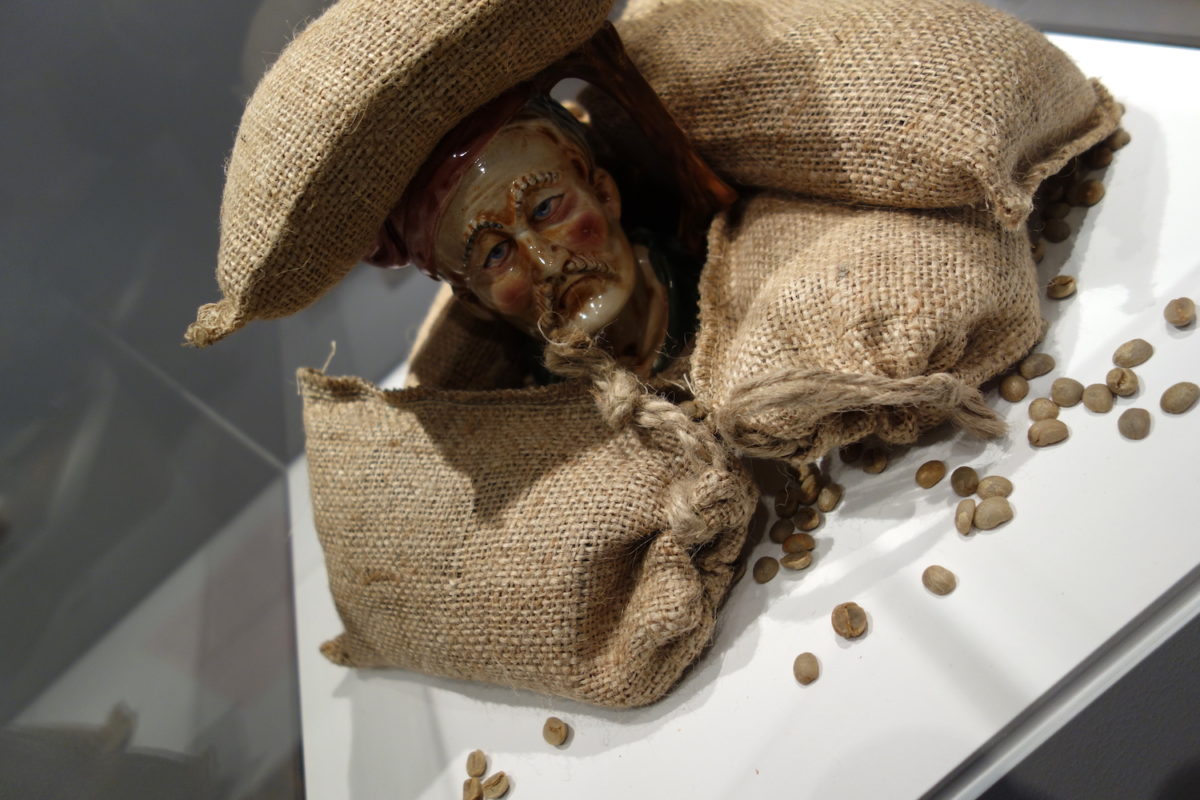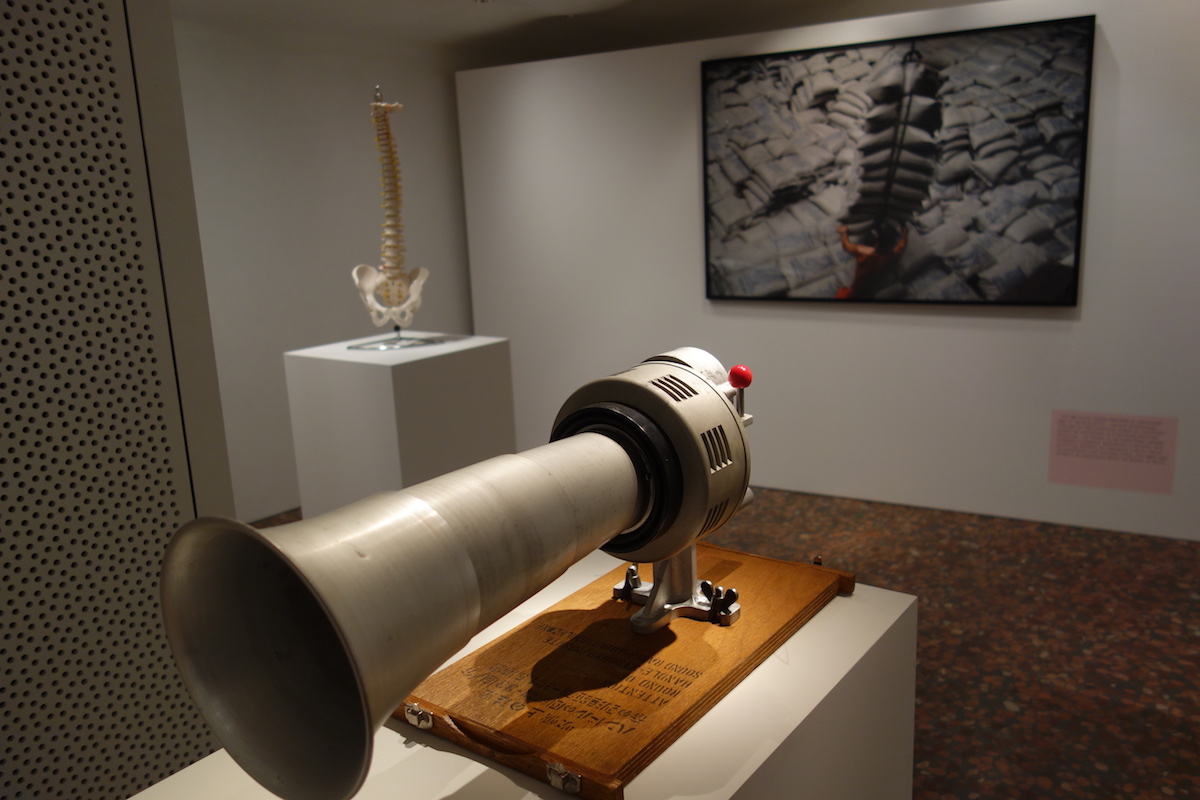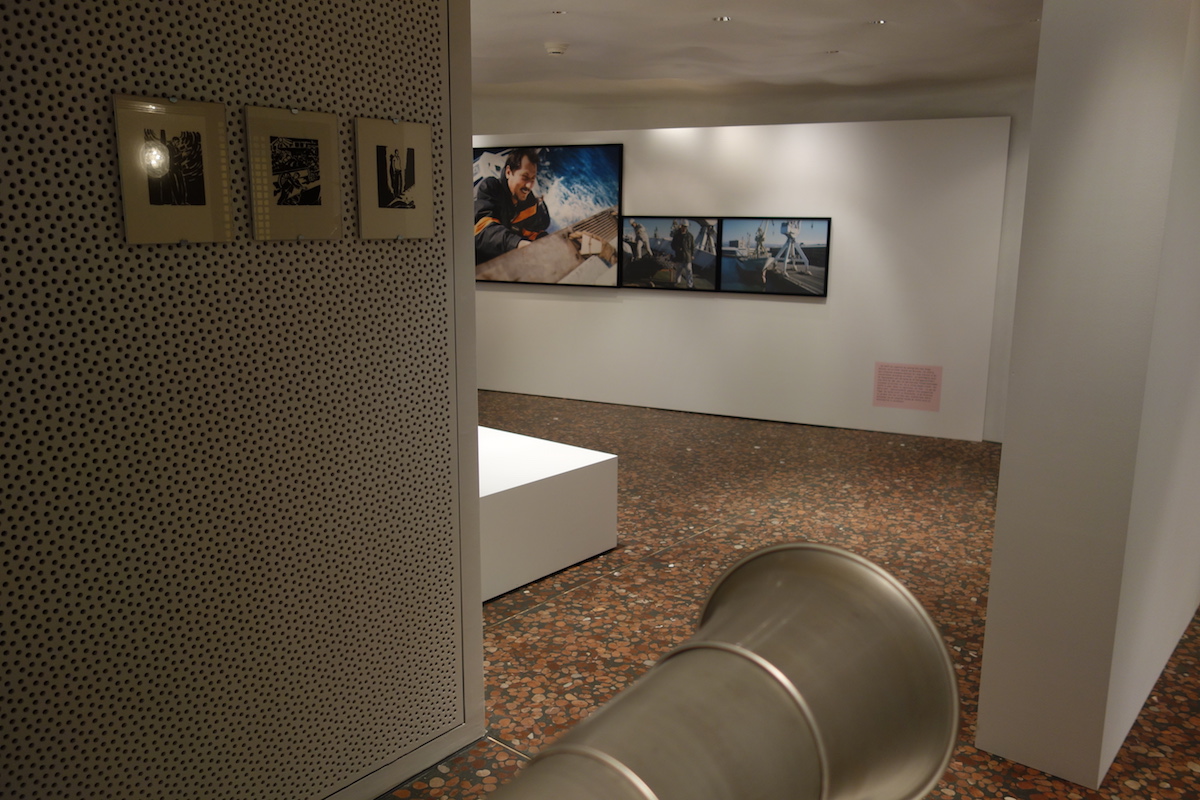With his Dockers’ Museum Allan Sekula focuses attention on aspects of the global economy that are often obscured by the more abstract facts and figures proffered by the international media. Here, our interest lies not in the stock market prices that flicker ephemerally across brokers’ screens or in the enormous commodity transactions that are executed with a couple of mouse-clicks. On the contrary: Sekula’s museum is a salutary reminder that global trading, even in the age of the so-called “knowledge economy”, does not take place exclusively in the Internet. It is still, and always has been quite literally conducted on the backs of the millions of people who make it possible.

Among the countless tiny, hard-working cogs in the machine behind global trading and production are the dockworkers who load and unload gigantic container ships with tons of commodities, components and other goods. Sekula’s photographs bear grim testimony to these alien worlds: they not only show the oil-smeared filth, the regional weather conditions and the physical demands of the work, but are also infected by the wry humour that exists both on board ship and in the docks. Despite his analytic interest in basic economic structures, Sekula never loses sight of the individual qualities of his protagonists or the singular nature of the locales in which the situations arise.
Sekula’s art dissociates itself from classic Marxist iconographies in which the worker is stylized into a modern, revolutionary hero. It also goes beyond socio-documentary photography, whose sole purpose is to demonstrate the misery and helplessness of the lower classes. Unlike these contrasting typifications, which reduce what they depict to a prefabricated truth, Sekula’s works depend on active reciprocation from the seeing and thinking observer. His multilayered image and text arrangements, which he complements in The Dockers’ Museum for the first time with a number of “objects of interest”, as he calls them, open up a multitude of visual and verbal associations, which the individual observer can discover for himself and link up to create contexts that make sense. It is an art form that has emerged from post-conceptual photography and installation art.
Apart from this modernistic legacy, the Dockers’ Museum is part of another, more traditional, line of descent: this is the activist exhibition, whose purpose is to shake its public out of its lethargy and make a call to political action.

For a few weeks in the late 1990s, Sekula was aboard the MV Global Mariner, a former cargo ship that the International Transport Workers Federation had converted into a floating exhibition space and sent off on an 18-month voyage round the world. This unusual undertaking was designed to make the public more aware of the miserable working conditions in the maritime economy and to generate bonds of global solidarity between dockworkers. One of the exhibition’s central themes was the flimsy legal construct represented by the flag of convenience, which ship-owners are able to fly to transform their vessels into virtually lawless entities, together with the maritime accidents that happen because ships and their crews have been stretched to the limit.
The MV Global Mariner and its program were not always welcome: in China, for example, they were allowed to anchor only in the roads, while Greece refused point-blank to give them permission to moor. Following a collision with a large container ship in August 2000, the freighter finally sank in the Orinoco estuary, just off the coast of Venezuela.
In his photographic series Ship of Fools Sekula succeeded in capturing some the typical moments of this adventurous voyage and in the process set up a memorial to the untiring struggle for a more just order on the world’s oceans. The title Ship of Fools is by no means intended to be frivolous but appears to be based on a notion aired by the French philosopher Michel Foucault. In his book Madness and Civilization: A History of Insanity in the Age of Reason he describes a painting – The Ship of Fools – by Hieronymus Bosch as the last bastion of an irrationality that prevailed freely before it was locked away and “disciplined” by the spirit of the Enlightenment.
The exhibition on the Global Mariner likewise highlighted a reality that is largely suppressed by the prevailing economic orders of knowledge and perception.

In the Dockers’ Museum this modern interpretation of the Ship of Fools is enriched with a collection of objects that all belong to the phantasmagoria of life and work in the docks. They include small coffee sacks from Santos, which remind us of the historic origins of global maritime trade, and plastic figures of dockworkers that are designed in California and produced in China. There is the model of a human spinal column, bent under the burden of physical labour, or a still taken from the US musical The Thrill of Brazil (1946), in which the dancers balance heavy sacks on their heads with aplomb. Sekula acquired all these objects through auctions on the Internet, the medium that has helped to make the world of material, physical work invisible. Among them is a small statuette entitled Débardeur du port d’Anvers [Docker in Antwerp] (1890) by Constantin Meunier, a Belgian sculptor who is particularly renowned for the stark naturalism of his work. It is of a stevedore in a pose that would probably find disfavour among the capitalists. The docker has taken a break from his work and assumed an upright, proud stance, as he observes the goings-on around him. Perhaps he is even reflecting on his own role and the conditions to which he is subject in society.








